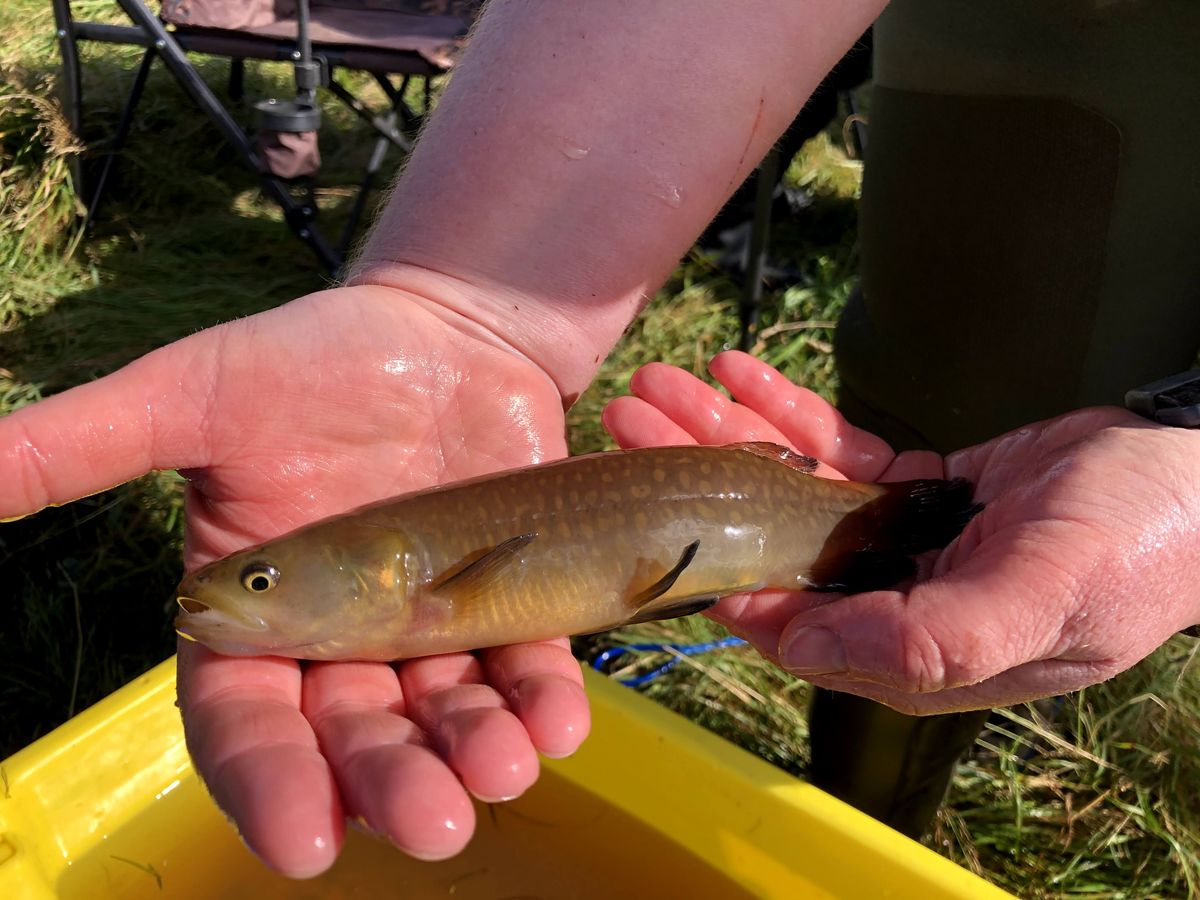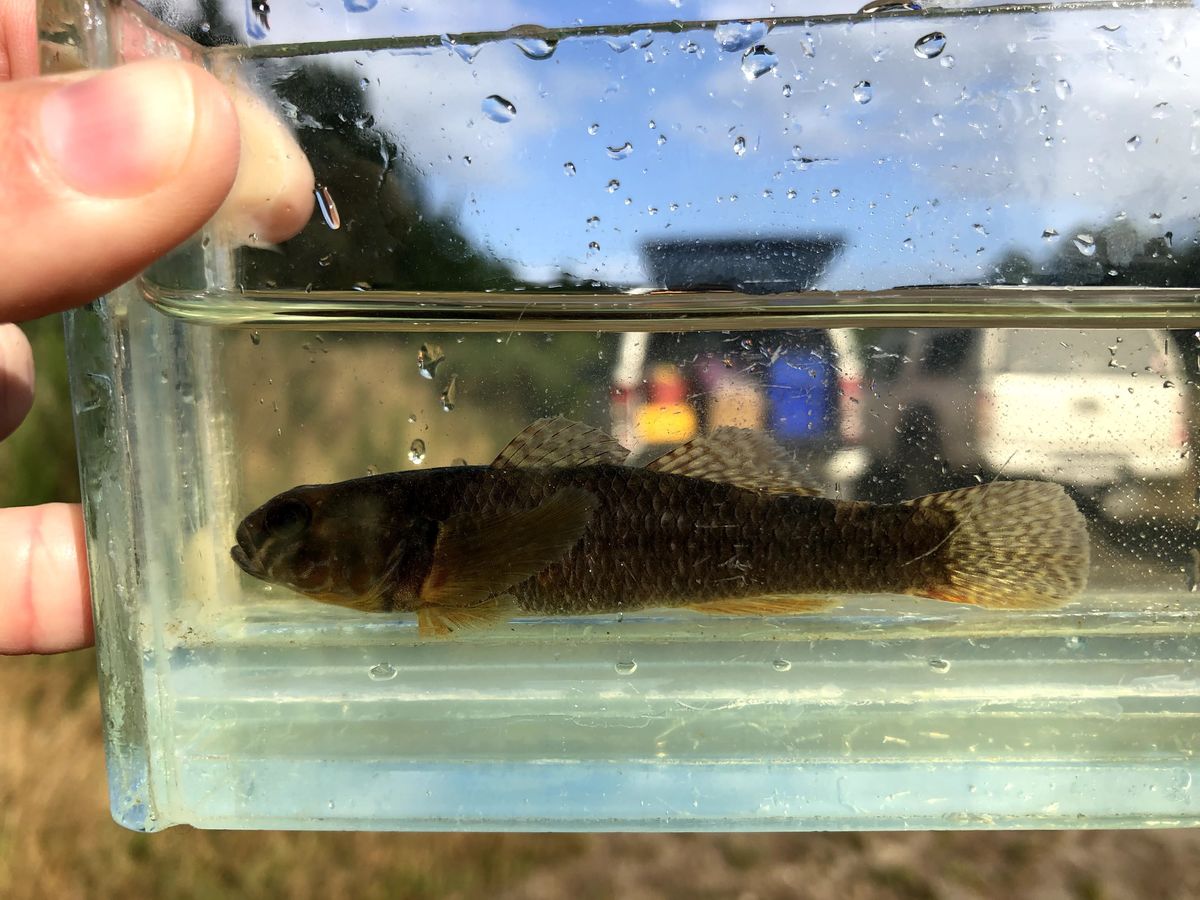
The fascinating fishy connection showing why restoration in lowland freshwater ecosystems is so important
October 18, 2022
Results of recent research reveal the dynamics of the food web in Waituna Creek and Lagoon.
As part of the 2019, 2021 and 2022 annual Waituna Creek fish surveys with the Cawthron Institute, we had the opportunity to undertake stable isotope analysis to better understand the food web in the Creek and Lagoon. It is hoped the findings will help inform decisions around management of the Lagoon, its tributaries and the impact upon biodiversity, says Pat Hoffmann, DOC Waituna Site Lead.
“Research questions included finding out what predatory fish (like giant kōkopu, tuna/longfin eel, giant bully and brown trout) are eating, whether they rely more on lagoon-derived or creek-derived food and estimating the mass of īnanga consumed each year”, says Hoffmann.
Dr Simon Stewart from Cawthron, who led the investigation, explains: “These are important questions because they can show us what impact the mechanical opening of Waituna Lagoon to the sea (or keeping it closed for prolonged periods) may have on the diet of predatory fish in Waituna Lagoon and Creek”. Nationally, this study is useful because it describes the aquatic food web in one of New Zealand’s largest and least modified coastal lagoon and wetland systems; and it estimates the importance of marine-derived nutrients for freshwater predatory fish, says Dr Stewart.
Previous studies have identified multiple food sources in the lagoon and creek including zooplankton, macroinvertebrates (snails, caddisflies and worms) and small fish (common bully and īnanga). Finding out which fish are eating which food sources might seem like an impossible task. “Thankfully, with the help of Cawthron, we were able to use a technique involving isotope analysis of tissue samples to help us solve the mystery,” says Hoffmann.

Pat Hoffmann

Untangling the food web
“Different food items and habitat types have distinct isotope signatures – a geochemical ‘fingerprint’ that recorded where they've been and what they’ve eaten”, explains Dr Stewart. “For example, macroinvertebrates living in the lagoon have an isotope signature distinct from that of macroinvertebrates living in the creek. It’s therefore possible to analyse tissue samples from fish, to find out, broadly, what they have been eating and where it comes from. The data showed that smelt and īnanga have the strongest reliance on food derived from the lagoon, whereas giant kōkopu consumed food from the creek.”
The data from the analysis was used to assign a trophic level (from 1: eating plants to 4: apex predator) to each individual fish sampled to determine which species are towards the bottom of the food web (primary consumers) and which ones are at the top (tertiary consumers such as brown trout and eels). For example, some longfin eels surveyed had a trophic level greater than 3, suggesting they were feeding on other tertiary consumers.
Smaller fish (such as common bully and īnanga) tended to rely on food derived from the immediate habitat where they were collected. So, bullies collected near the lagoon ate a higher proportion of lagoon food, while bullies collected further upstream ate a higher proportion of food from the creek. In contrast, larger longfin eels and trout, which travel further, ate a higher proportion of lagoon-derived food regardless of where they were caught. This included individuals caught 7.5km upstream from the lagoon. Īnanga reared in the lagoon travelled upstream where waiting eels devoured them, taking on the isotope signature of the īnanga’s lagoon-based diet.
“Cawthron estimated that eels and trout collectively consume approximately 1 tonne of īnanga each in the lower 7.5 km of Waituna Creek per year”, says Hoffmann. “They might look small, but those eels and trout are consuming an incredible mass of food”.
Cawthron estimated that eels and trout consume approximately 1 tonne of īnanga each in the lower 7.5 km of Waituna Creek per year

What does this mean for ecosystem management?
This research reinforces why providing habitat for freshwater species is so important, especially in lowland waterways where water quality is more likely to be poor. Healthy ecosystems with diverse habitat at the bottom of catchments can mean more healthy and diverse fish communities upstream. Most of our native fish swim upstream from the bottom of the catchment, providing habitat gives our threatened freshwater species the best chance of survival while land use changes take decades to show water quality improvement.
Other findings from the research indicated food derived from the Lagoon was more important for eels and trout, while the giant kōkopu relied on food in the creek. Interestingly, the food source for giant kōkopu also underwent a change in 2022. In previous surveys, giant kōkopu fed mostly on macroinvertebrates. The 2022 research was conducted during a severe drought when water levels in Waituna Creek were the lowest in recorded history. In the drought year, the giant kōkopu in the creek ate more īnanga than in previous years.
According to Dr Stewart, the larger eels that normally feed on īnanga, disappeared from the creek at the time of the survey, likely in search of deeper water in the lagoon. With no eels around, the giant kōkopu had free rein to eat īnanga as they migrated upstream.
The drought also impacted the locations some fish species were occupying. As water levels in Waituna Creek dropped, there was very limited natural habitat left for giant kōkopu in the tributaries. Hoffmann says all the giant kōkopu caught in the study in 2022 were found underneath or around the habitat structures that Living Water had installed in the creek. This suggests that the structures enhanced resilience by providing refugia for giant kōkopu during low flows.
“Over the past five years Living Water has restored and transformed the lower Waituna Creek with wide riparian margins planted with native Carex and other plants, which provide natural filtration for sediment and nutrients’, says Hoffmann. “Beneath the surface of the creek manuka bundles and logs have been anchored to the creek’s bed to create safe habitat and riffles in the water, to attract fish and invertebrates. These habitat structures are where the giant kōkopu sought refuge when their natural habitats elsewhere were lost in the drought .”
The fish tissue isotope analysis has provided fascinating insights into the freshwater food web in the Waituna catchment. It’s shown how fish respond to adverse conditions and can move around the catchment and modify their diets to survive. It’s a reminder that freshwater environments are dynamic and complex, and how droughts and flooding can upset the balance. Most importantly, it shows how critical freshwater restoration work is for providing habitat and food sources to ensure the survival of biodiversity during times of crisis.


